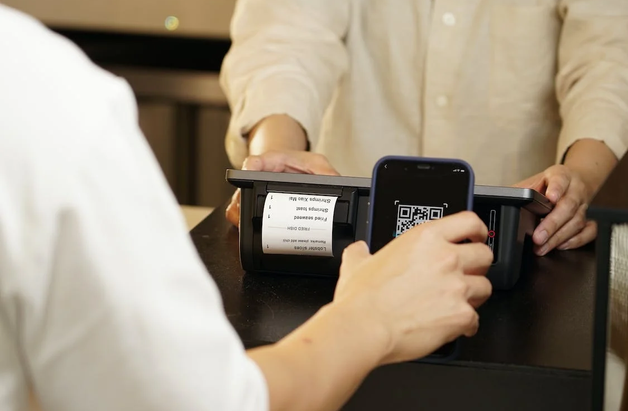Bill vs. Invoice: What are the Key Differences?

March 01, 2023
It is common for people to confuse bill vs. invoice, especially when talks of purchasing and payment arise. Although both terms refer to pretty much the same thing, it is important not to mix up the use of these terminologies.
Invoice and bill are used exclusively by different parties in a purchasing cycle. Hence, it is important to distinguish when to properly use the terms to avoid confusion.
This blog will help you pinpoint all the key distinctions between a bill and an invoice and give you all the details you need about the two important documents!
Key Takeaways
- A bill is received by customers, while vendors or businesses send invoices.
- Both documents contain the details of the items purchased, and the total amount to be paid.
- Invoices have individual reference numbers assigned to them and are used for accounting purposes.
- A bill does not have a reference number and is used to inform customers of the amount they must pay for certain goods and services.
- Billing customers in a B2C transaction demands immediate payment from the customer, whereas billing clients in B2B follows a set date for payments.
- Invoices are essential in any business or transaction because they help track sales, protect sellers against non-paying customers, etc.
What is a Bill?

Essentially, a bill is the customer’s copy of the invoice issued by the seller or service provider. It contains the typical information you would see in a regular invoice issued by a seller, albeit not as detailed.
The bill shows an enumeration of all the services or goods purchased. Along with the specified list of goods and services, a bill also contains the price of each item and the total amount that is due to be paid by the customer.
Once a customer receives the invoice, it becomes a bill. When your network service provider or utility company sends you the payment due for your monthly use of their services, they do so in the form of a bill.
When you dine at a restaurant, you ask for the bill once you’re done eating and are ready to pay for your order.
Billing customers in a B2C (business-to-consumer) setup is different from a B2B (business-to-business) transaction. In B2C, the bill is issued to the customer, and payment for the goods is expected immediately. Whereas, the payment for a B2B transaction is set at a specific date.
What is an Invoice?

An invoice is a document issued by the seller to a customer or buyer for accounting purposes. It contains the list of items or services ordered by the customer, along with their corresponding prices.
At the same time, invoices contain the payment terms and the payment due date for the transaction. Not to be confused with a receipt, invoices are created to request payments from the customer.
A receipt contains the same information that you would find in an invoice and is given once the payment is made. Receipts serve as proof that the customer has sent the payment to the seller.
There are multiple classifications of invoices based on the type of business or seller that issues them.
Examples of these are:
- Contractor invoice
- Photography invoice
- Small business invoice
- Graphic design invoice
- Writer invoice
Why are Invoices Important?

Invoices are important to any business because they reflect the sales made for a particular period. Similarly, invoices provide sellers with a reference for their inventory so that they can easily note and pinpoint which products are fast-selling from those that are not.
Also considered legally binding documents, invoices provide protection to businesses. An example of this is how advance invoices are issued to secure payments ahead of time and cut potential losses if the customer refuses to settle their payment.
Moreover, invoices are akin to a mutual agreement between the buyer and seller. The seller creates a summary of the customer’s purchase and indicates the total amount. In contrast, the customer verifies that the information on the invoice is consistent with the items they have received.
When both parties acknowledge that all information in the invoice is correct, the transaction becomes successful and may even pave the way for repeat purchases.
What’s the Difference Between a Bill and an Invoice?
Here are a few more key details that distinguish a bill from an invoice:
#1. Issuing
An invoice is issuedto collect payment from the customer. A bill is received by the customer along with the goods and services purchased.
Invoices are like notifications that inform customers of how much they owe a business for using their services or placing an order for their products.
#2. Purpose
Although both bills and invoices are primarily tied to monetary transactions, they do not necessarily share the same purpose. What this means is that businesses issue invoices to keep track of their profits and finances.
Meanwhile, bills are used to inform customers of their financial obligations to a business or vendor who offered their services.
#3. Reference Number
Invoices have a distinct reference number assigned to them for easier tracking of orders. It is also essential for businesses to organize their accounting records at all times.
A bill does not require a reference number since it is only meant to inform the customer of the amount they are due to settle in exchange for a specific service or product.
#4. Sent or Received
An invoice is sent by the seller. A bill is received by the customer.
Once the customer sends the payment according to what is declared in the bill, the seller will then issue a receipt to acknowledge the compensation sent by the customer.
How to Make an Invoice Like a Professional
Invoicing becomes a challenge the more orders you have to handle. There are two effective ways you can go about creating your invoices:
The first one is to produce one manually through Excel or Word. Using Excel or Word has been the traditional way that sellers prepare invoices for most of their transactions, although it may leave more room for errors since the values are inputted laboriously.
The second option is to use an online invoice generator. Online invoice generators are practical and easy to use—the perfect solution you need as your business continues to expand.
Here’s how to use our online invoice generator:
- Open a free invoice template.
- Fill in the blank boxes with the necessary information.
- Review and download the document.
It’s a time-saving alternative that reduces errors in your invoices, ensures you send payment requests in a timely manner, and keeps your operations smooth-sailing!
Different Types of Invoices
Listed below are additional variations of invoices, such as:
Invoice Type | Definition | |
|---|---|---|
An advance invoice is issued before the customer receives the item. It is done if the item requested has limited stocks, the service comes with upfront costs in delivering the customer’s order, or if there is a possible risk of non-payment. | ||
A consolidated invoice is used for processing payment for multiple services or goods. | ||
This type of invoice is issued whenever a customer requests a refund or returns a product. | ||
A digital invoice is the electronic version of a typical paper-based invoice. It is typically in a Word file or PDF format and is sent digitally via email. | ||
A freelancer invoice is used by self-employed agents or independent contractors to bill their clients for their services. | ||
A recurring invoice is applicable when the service is acquired or requested over a continuous period of time. | ||
Similar to a typical sales invoice, a small business invoice contains the total costs charged for all services and products rendered to a client. | ||
A tax invoice is issued when a buyer purchases taxable items or goods. It is mostly applicable when the goods are bought for the purpose of reselling them. |
Final Thoughts
Distinguishing a bill from an invoice may seem like a very basic and small bit of knowledge to have, but it is a key detail that every seller, business owner, or customer must know.
In this manner, customers will know what to expect from a seller when they purchase an item or send a purchase order. Consequently, business owners and vendors can keep their accounting records systematic and properly organized.
Hopefully, this article has provided you with all the key details about bills and invoices, and now you can tell the difference between the two easily!


